How Ultrasonic Power and Intermetallic Formation Work in Thermosonic Ball Bonding
Authors: C. D. Breach, F. W. Wulff
Scanning Electron Microscope (SEM)
Force sensors
Temperature sensors
Types of wires: Gold, copper
SEM analysis for intermetallic coverage
Mechanical adhesion testing
Optical microscopy for intermetallic measurement
Mechanical testing of bonds
Detailed schematics and measurement diagrams
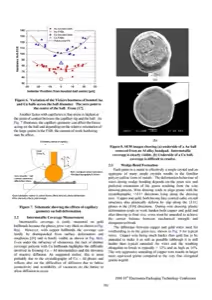
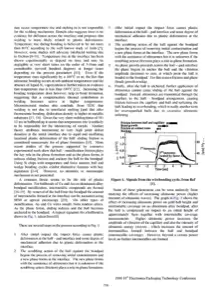
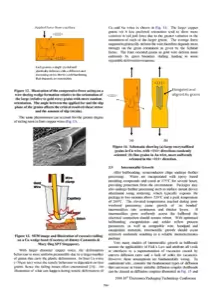
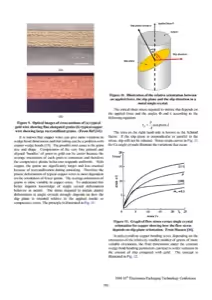
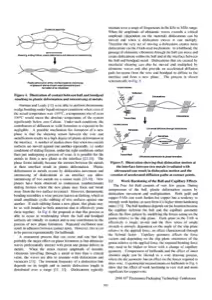
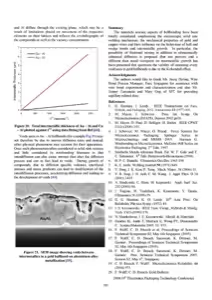
Executive Summary
This research project is concerned with the subject of thermosonic ball bonding, a process which is employed in the field of microelectronics for the purpose of connecting components of a relatively small scale. The objective of the study is to enhance comprehension of the manner in which materials behave during this process. Thermosonic bonding is a process that employs the combination of heat, ultrasonic vibrations, and pressure to create connections between a wire, typically gold or copper, and a substrate, such as aluminum. The study examines the formation of bonds and the microscopic alterations in the materials utilized.
The study's key findings include insights into the role of ultrasonic vibrations in the removal of contaminants and the mixing of metals at the bonding site, which facilitates the formation of a robust bond. Furthermore, the study examines the formation of intermetallic compounds at the bond interface, with a particular focus on the interactions between gold and aluminum or copper and aluminum. These compounds are of great consequence with regard to bond strength and reliability; however, their growth can also result in issues such as the formation of voids (tiny gaps) that can lead to a weakening of the bond over time.
Get your article summary
The summary will be sent to your email address
Main Focus
The paper presents an exhaustive examination of the materials science underlying thermosonic ball bonding, a pivotal process in microelectronics packaging. The principal objective is to examine the microscopic mechanisms that regulate bond formation, intermetallic growth, and bond reliability, with a particular emphasis on gold-aluminum (Au-Al) and copper-aluminum (Cu-Al) systems. The objective of the study is to elucidate the role of ultrasonic vibrations, frictional forces, and plastic deformation during the bonding process, thereby filling existing gaps in understanding.
Background and Motivation
Thermosonic ball bonding has been employed in the electronics industry for an extended period of time; however, the microscopic and materials science aspects of the process remain under-researched. The prevailing models tend to prioritize macroscopic phenomena, such as frictional heating and ultrasonic energy, while failing to sufficiently address the atomic-scale interactions that underpin intermetallic compound formation.
As microelectronics progresses towards smaller and more intricate packages, it is imperative to enhance the comprehension of the materials science underlying bond formation to guarantee the long-term reliability of high-performance devices. This study is driven by the necessity to resolve the inconsistencies present in the existing bonding models, particularly with regard to intermetallic growth and the role of plastic deformation and ultrasonic power.
Methodology
The study employs a combination of experimental techniques and theoretical models to assess the bonding process. The principal methods utilized are as follows:
- Materials: Gold and copper wires were bonded to aluminum alloy substrates, and the resulting bonds were subjected to analysis to ascertain the formation of intermetallic compounds.
- Ultrasonic bonding: The effect of variable ultrasonic power levels on the formation of bonds and the growth of intermetallics was observed during the bonding process.
- Microscopic Analysis: Scanning electron microscopy (SEM) was utilized to examine the bond interface, while optical microscopy was employed to quantify intermetallic coverage.
- Mechanical Testing: The bond strength was evaluated through mechanical adhesion tests, and ultrasonic force sensors were employed to assess the friction and deformation involved in the bonding process.
- Intermetallic Growth: Subsequent to the bonding process, the samples were subjected to thermal aging in order to evaluate the formation of intermetallic layers under conditions that emulate those encountered in actual manufacturing operations, such as solder reflow.
Key Findings
- Ball Bond Formation: The process commences with plastic deformation of the ball at the pad interface, driven by impact force and facilitated by ultrasonic vibrations. The role of ultrasonic energy in the removal of contaminants and the initiation of intermetallic formation is of significant importance. However, the precise mechanism by which this occurs, whether driven by friction, ultrasonic energy, or a combination of both, remains uncertain.
- Intermetallic Growth: The formation of Au8Al3, the first intermetallic compound, occurs as a result of the growth of gold-aluminum bonds at both the ball and pad interfaces. Copper-aluminum bonds form CuAl₂; however, the growth rate is markedly slower than that observed for Au-Al bonds, which can be attributed to differences in lattice diffusion rates. The study corroborates the hypothesis that increasing the ultrasonic power enhances the intermetallic coverage. However, this approach may also result in over-bonding and potential bond failure.
- Role of Ultrasonic Energy: A significant finding is the impact of ultrasonic vibrations on the creation of defects and plastic deformation at the interface. In contrast with the predictions of earlier models, which suggested that intermetallic growth is solely driven by diffusion, this study proposes that ultrasonic vibrations generate dislocations, which facilitate diffusion and accelerate phase formation. This mechanism is especially pronounced in Cu-Al bonds.
- Microscopic Mechanisms: The paper presents a challenge to the traditional friction-only model of bond formation, proposing that both friction and ultrasonic-enhanced dislocation motion play a role in the intermixing of metals at the interface. Moreover, although a rise in temperature at the bond interface is observed, it is not the primary factor influencing intermetallic growth, as the bonding process occurs below the melting points of the involved materials.
- Thermal Effects and Voids: The study offers insights into the formation of voids in Au-Al bonds, which are often attributed to the Kirkendall effect. The findings indicate that void formation may also result from stress-induced phenomena during intermetallic growth, particularly when the bond is subjected to elevated temperatures during processing.
Implications for Future Research and Industry
The findings have significant implications for both future research and the microelectronics packaging industry.
- Refining Bonding Models: The study indicates that the extant models of thermosonic bonding must be revised to incorporate the role of ultrasonic-enhanced dislocation motion and plastic deformation. It is recommended that future research concentrate on atomistic-scale simulations in order to gain a deeper understanding of the contribution of these factors.
- Optimizing Ultrasonic Power: It would be advantageous for the industry to optimize ultrasonic power settings in order to achieve an equilibrium between sufficient intermetallic formation and the prevention of over-bonding or excessive void formation. This has direct implications for wire bonding in advanced packaging technologies, where precision and reliability are of paramount importance.
- Material Selection: The relatively slow intermetallic growth in Cu-Al bonds indicates that the bonding of copper may necessitate the use of distinct process parameters compared to gold, particularly in the context of high-temperature applications. These findings have the potential to inform the development of new materials or bonding techniques that are specifically designed to address the unique requirements of various packaging applications.
- Thermal Management: The insights into void formation during thermal aging serve to highlight the crucial role of thermal management in wire-bonded packages, particularly in light of the continued rise in device operating temperatures.
Limitations
Although the study offers significant insights, several limitations require further investigation.
- Absence of Atomistic Simulations: The study is principally based on experimental data and macroscopic models. The incorporation of molecular dynamics simulations could facilitate a more comprehensive comprehension of the atomic-scale interactions that underpin bond formation and intermetallic growth.
- Limited Material Scope: The focus on gold and copper wires constrains the generalizability of the findings. In order to gain a more comprehensive understanding of the subject matter, it would be beneficial to expand the research to include other wire and substrate materials, such as silver or palladium. This would allow for the generation of broader insights that could be applied to a wider range of packaging technologies.
- Temperature Constraints: The study's conclusions are based on the bonding temperatures that are typical of microelectronics manufacturing. Further research into higher-temperature bonding processes or the impact of varying thermal cycles may yield insights relevant to power electronics and other high-stress applications.
- Mechanical Test Range: The study employs a combination of mechanical adhesion tests and scanning electron microscopy (SEM) analysis as its primary investigative tools. The incorporation of more advanced mechanical characterization techniques, such as nanoindentation or in-situ mechanical testing during bonding, could facilitate the acquisition of more comprehensive data on the material behavior under stress.
Get your article summary
The summary will be sent to your email address


